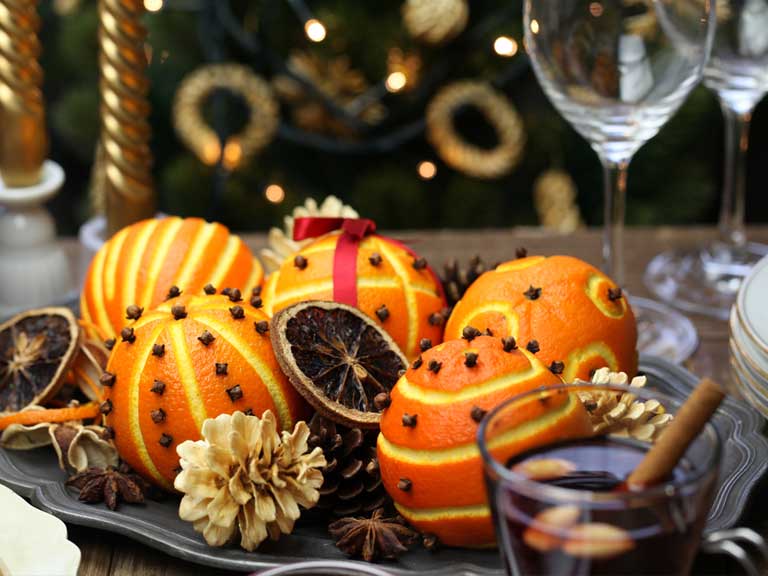What is a Pomander?
Medieval herbalists used pomanders – a mixture of fragrant, dried herbs in cloth bags, to ward off illness or bring strength and good fortune.
The word “pomander” derives from the French pomme d’ambre, meaning “apple of amber”—a reference to the round shape of the object.
Today, pomander balls are usually a lot simpler; most consist of an orange studded with cloves and dusted with other spices. See our own recipe below!
As the fruit dries, it releases a lovely fragrance. Pomanders make beautiful centre pieces, gifts for friends, tree ornaments, and air fresheners.

What you’ll need:
- Oranges (or other citrus fruit)
- Toothpick/ Skewer
- Whole cloves
- Kitchen roll

Step by Step:
Getting the kids involved in the pomander ball process can be a fun Christmas activity (and only a little messy). It’s as easy as sticking whole cloves into a fresh orange. To avoid hurting your fingertips, we recommend making holes in the rind with a toothpick or skewer. Be sure to keep some kitchen roll around for the orange juice that’s sure to escape!
Once you have the hang of adding the cloves to the orange rind, try making more-detailed designs. you can plan these designs out ahead of time on a piece of paper and then use a felt tip pen to draw the design on once ready. Try designs like swirls or stripes, we find these look most effective. Kids are sure to have fun planning and creating their own designs, and you will enjoy the delicious scent their pomanders create when they’re finished!
Maybe orange isn’t your favourite smell—if so, other citrus fruits make great pomander balls as well! Add cloves to grapefruits, lemons, or other citrus fruits for a slightly different scent and an different pop of colour.
Once each of your citrus fruits has cloves in your design, hang them up to dry. The scent really comes through once the fruit has dried a little. Hanging them up can help your pomander balls dry quickly and avoid mould. Be sure to make your pomander balls right at the beginning of the Christmas season—you want to make sure they have enough time to dry and become aromatic before the season is over.
You could make them your Christmas table centrepiece, dress up a festive wreath or fireplace display, or include them in a floral arrangement. If you plan on hanging them as Christmas ornaments, tie decorative ribbons around the oranges before you plot your design. This way, you won’t be attempting to arrange a ribbon around the cloves.

Pomander balls are beautiful, smell great, and provide the perfect addition to your homemade Christmas decorations. Plus, getting the children involved is a great way to build more Christmas memories and add to your Christmas traditions.
Don’t forget to share your finished pomanders #ayearofplayadvent so we can see your creations
Have fun!